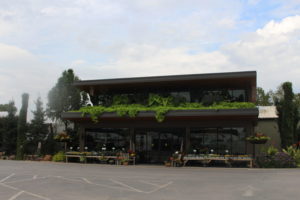It’s not Y2K, it’s not even close
If you’re a regular reader of The New York Times, you may have had the misfortune of coming across an article entitled “Bigger Bar Code Inches Up on Retailers” this past August. This work of fear-inciting adjectives and general misinformation discusses something called Sunrise 2005, the name that the organization responsible for allocating bar codes to products nationwide, the Uniform Code Council (UCC), has given to describe January 1, 2005: the date when retailers are advised to be prepared to begin accepting 13-digit bar codes, or EAN-13.
Currently, North American retailers and manufacturers uniformly use the UPC, a 12-digit code that, while permitting seamless trade among North American companies, has proved to be a primitive barrier to international trade; just as the United States is one of the few nations still operating on the English measurement system, we are also one of the few working with 12-digit bar codes. This means that any country whose products are marked with 13-digit codes has to create a special inventory of 12-digit-coded products for export to the United States. Today, more than 80 countries around the world actively use EAN-13.
According to the article, “the additional number is enough to make checkout scanners seize up and make computers crash, perhaps disrupting entire supply chains.” Sounds deleterious, doesn’t it? Things are not always as they seem. In speaking about Sunrise 2005, the author also makes repeated comparisons to the once-feared Y2K debacle, which, as anyone aware of recent history can attest, turned out to be much ado about nothing. And perhaps the most telling sign that the author has not given much care to the details of this story is the fact that she doesn’t even use the proper name for the UCC, which she refers to throughout the article as the Universal Code Council.
The chances are high that your scanning and database technology is recent enough that its manufacturer already accounted for expanded bar coding information. Regardless, you should not take for granted that this has been resolved for you without checking up on it. Read on to understand the truth about this issue and find out what you may need to do to prepare for it.
It’s not Y2K
Let us begin by shedding the whole comparison of bar code expansion to Y2K. According to Al Garton, director of general merchandise for the UCC, “We do not view this as a Y2K, although there are companies who have had systems in place for a long time and they may view it that way because they’ve got a lot of work to do.” Just how much work and how much money may need to be spent will depend on the age and complexity of your systems; the only way you can determine your current system’s capabilities is to contact your database equipment provider and make sure that the equipment you have can read and store EAN-13 bar codes in addition to UPCs. “In addition to” are the operative words here, as the January 2005 date does not mean UPC codes will become obsolete, but simply that retailers should be able to accept UPC and EAN-13 codes. The heart of this issue is about the expansion of databases, nothing more. And despite the fact that The New York Times article states that upgrades and changes “will require significant investments in time and capital,” this is not necessarily true. Says John Terwilliger, vice president of market development for the UCC, “In most cases, scanners can be easily upgraded at little or no expense to scan the 13-digit EAN bar code.”
Additionally, even if the entire North American supply chain were not fully prepared for this change, there is no reason to believe that a bigger bar code would induce system failure. “As far as the UCC goes, it is not our belief that systems will shut down, it is not our belief that people have to scrap their existing systems and buy something new; the Sunrise date for January 1, 2005, is the date the UCC is recommending that companies be prepared to be able to not only scan but store the information for EAN-13 numbers.”
In a letter written to The New York Times to right the wrong information printed in the Times article, Terwilliger writes, “The suggestion that checkout scanners will seize up, computers crash or entire systems fail after January 1, 2005, is absolutely incorrect. While companies that are not compliant may experience problems scanning the longer EAN-13 symbols, it will not disrupt commerce in North America. Probably the biggest and most visible issue could be the inconvenience to the consumer. The 2005 Sunrise date is an important issue; but it is erroneous to make January 1, 2005, a date that will produce panic and widespread disruption to the supply chain.”
Keeping up with the world
Why is there a need to change the current system? “The EAN-13 numbers are being used everywhere else in the world today besides North America in other words, we would like North America to join the rest of the world. The benefit to this is that manufacturers who send product to North America will not have to re-label that product with a UPC, because North American companies will then be able to read other bar codes, or other number structures, other than just the UPC,” Garton explained.
There has been a rumor circulating that the reason for the transition to EAN-13 acceptance is that the UCC is “running out” of numbers, another fallacy that the Times article put forth. Writes Terwilliger in his letter, Á “While the UCC has taken steps to preserve 12-digit capacity by assigning numbers based on the company’s product identification needs, there is not an infinite amount of 12-digit numbers. There is a significantly larger pool of 13-digit numbers, and the 2005 harmonization effort will allow the UCC to issue EAN-13 numbers when it becomes necessary to do so.” So at some point in the near future, EAN-13 bar codes will not only originate from foreign sources, but the UCC itself will begin to issue 13-digit codes in place of UPCs. For those involved in retail, even small retail businesses, this means that even if you aren’t currently receiving products from international manufacturers using EAN-13, it’s very likely that you’ll be seeing 13-digit bar codes from your North American manufacturers as time goes on, and you’ll need to be ready for that. Once again, the first step is to contact your database/scanning equipment provider and check on your system’s compatibility with 13-digit bar codes.
And while you’re at it, it’s a good idea to make sure your system is compatible with 14-digit numbers, which are also on the horizon. Called the Global Trade Items Number (GTIN), these bar codes will give companies the ability to encode additional data, especially for very small products like jewelry, produce, healthcare items products that companies are now not able to bar code properly. “A GTIN is not a new number, it’s not a new standard, it’s nothing more than a term to wrap around all those numbers that are already out there. When you think of bar codes, they’re not just used at the point of sale, they’re used in companies’ receiving docks and in other places to track information about those products. It’s just as important for companies to share information that happens on the back-end as it is at the consumer level. Those are all the compelling business reasons why companies need not stop at 13, but go to 14 while they’re there,” said Garton.
Relax through preparation
So what does this mean for the growers supplying your plant material, or the hard goods suppliers sending you pots, containers, garden accents and giftware? Your suppliers are obviously on the shipping rather than receiving end, and unless they are storing bar codes for inventory or other tracking purposes, it means absolutely nothing. This is primarily a retailer issue, as retailers receive products from a number of different sources. Your suppliers won’t have to alter a single thing that they’re doing now; you won’t suddenly be seeing 13-digit bar codes from them come January 1, 2005, nor should you require different bar codes from them.
“As long as a retailer’s system can store up to 14 digits, 12 goes into 14 very nicely, so there’s no reason to ask your suppliers to use a different type of symbol. You can scan it without any effort whatsoever. It would not make good business sense for a retailer to say to their supplier, ‘go out and put 13s on there,’ because it’s going to cost that supplier money that’s going to be passed on to the consumer, and the retailer knows that there’s no business benefit to that whatsoever,” Garton said.
So are retailers ready? According to Lisa Oliver, assistant vice president of live goods at Frank’s Nursery and Crafts, “Our computers are already set. We had upgrades that have taken [the number expansion] into consideration. Our information systems department made sure of that.” Wal-Mart spokesman Tom Williams said, “We have been preparing for it, are prepared and will perform seamlessly through the change.” Target Corporation refused to comment. Said John Trax Jr. of Trax Farms, Finleyville, Pa., “Our software supplier installed an upgrade in 2000 that allows us to deal with up to 20-digit bar codes. This effectively solves any UPC issues. We had problems for some time since we do occasionally bring in merchandise with EAN numbers and our software would choke on the larger number. This is no longer the case and we can now use both UPC numbers as well as EAN numbers.”
On the software supplier side, Robert Schmitz, owner of Wileywood Nursery and Floral, Mill Creek, Wash., and of SimPOS!, a point-of-sale and inventory tracking system with more than 100 installations at garden centers, wholesale growers, landscaping companies and others across the United States and Canada, says his company’s scanning equipment is already capable of holding up to 16-digit product codes. Software support is free through upgrade downloads completed on a monthly basis from the manufacturer’s Web site.
The readiness standard recommended by the UCC is completely voluntary the Council doesn’t have a muscled enforcement team that will be storming retail stores nationwide to ensure compliance with Sunrise 2005. It’s about voluntarily being ready, or voluntarily being left behind. Whether or not your systems are prepared for this change may not seem of dire immediacy right now, and they are likely already equipped to handle 13 digits. If you do nothing, however, your ill-preparedness could result in great inconveniences to the most important aspect of your business your customers. Are you willing to take that risk?
For more information regarding Sunrise 2005, visit the UCC Web site at www.uc-council.org.

















 Videos
Videos





